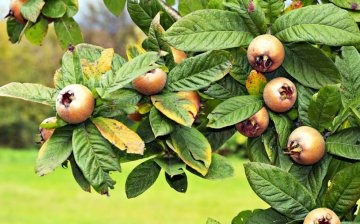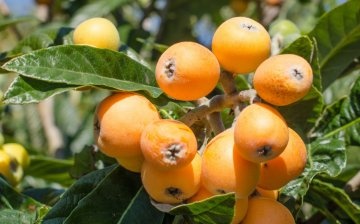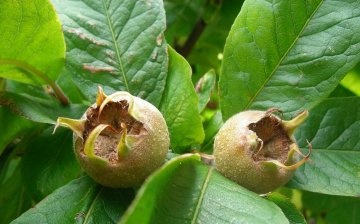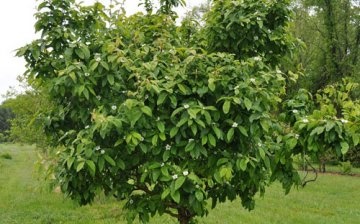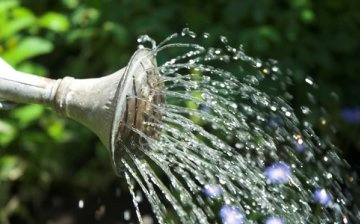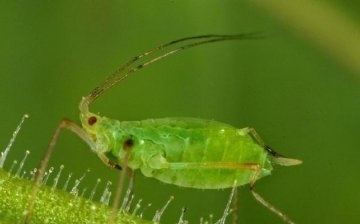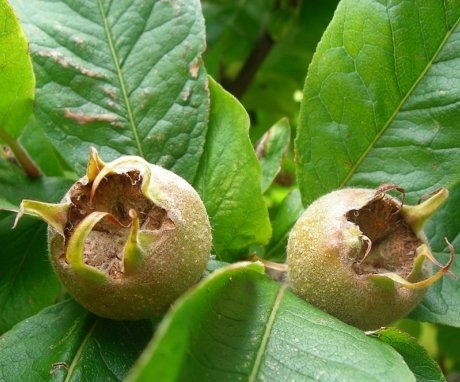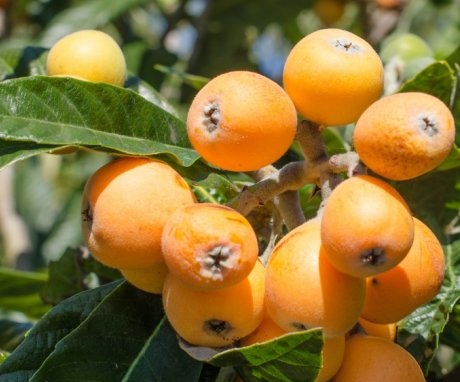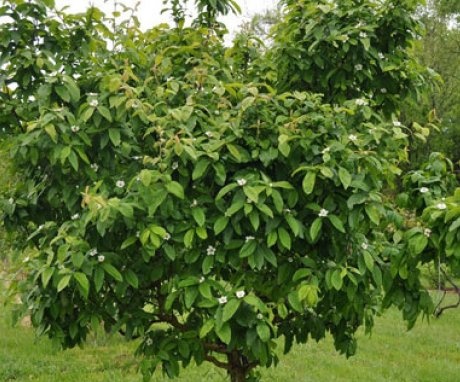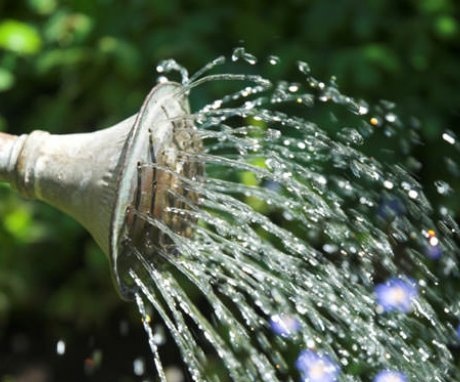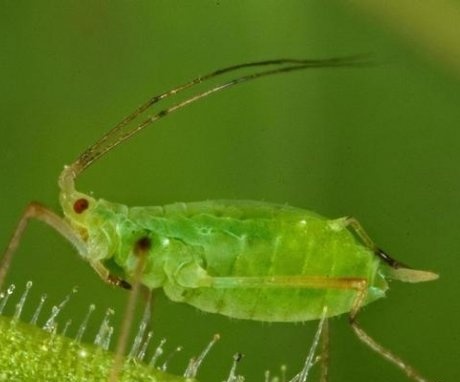Medlar: description, types and cultivation in the Moscow region
Common medlar (Caucasian or Germanic) was cultivated in ancient Babylon and Transcaucasia a thousand years before our era. Over time, the plant has spread to all warm regions of the world. It can be found in East, West European and Asian countries, on the Crimean peninsula and in Ukraine.
The spread of the Japanese medlar began from the Chinese, Japanese and Himalayan countries. In the world, it is cultivated in regions with a subtropical climate. At the end of the nineteenth century, the plant came to Ukraine, where it is called locoa, but did not receive universal recognition.
Content:
- Description of the types of medlar
- How to grow medlar in the suburbs
- Breeding methods and planting
- Providing competent care
- Disease and pest control
Description of the types of medlar
Medlar German (common) refers to deciduous fruit trees that grow up to eight meters. The culture has a developed and powerful root system, which is located close to the soil surface.
Features of the structure:
- Curved branches extend from a straight trunk, covered with cracked brownish bark, and form a spreading wide crown. Lignified parts of the tree are covered with small thorns.
- The leaves of the medlar are elliptical, painted in light green tones. The upper part of the leaf blade is smooth, and the lower part is pubescent. In the autumn, the foliage takes on crimson hues.
- Medlar blooms in late spring or early summer. Flowers 2-3 cm in diameter are painted white or pink and are concentrated at the ends of the shoots.
- Fruits are round in shape, covered with a dense light brown skin. Their diameter does not exceed five centimeters and have a specific sour taste. The pulp contains several pits with seeds. The fruits reach maturity in the middle or at the end of winter, but they are harvested after frost or in spring - after freezing, the pulp softens and gains sweetness.
Medlar fruits contain about 90% water, 8-15% sugars, vitamin C, the content of organic acids (malic and citric), pectin substances, mucus and phytoncides has been revealed. Foliage, bark and unripe fruits are saturated with tannins. The fruits of the medlar can be eaten fresh or soaked, used in cooking. For medicinal purposes, they are used to strengthen the intestines and improve digestion.
Decoctions of green fruits help with diseases of the digestive system and urolithiasis.
Japanese medlar (lokva) refers to evergreen trees that do not grow taller than five meters.
Features of the structure:
- The branches of the plant are covered with red hair.
- The foliage is large, up to 25 cm long, oval-oblong in shape. The upper part of the leaves is dark green, glossy, and the lower part is gray-green, pubescent.
- Japanese medlar blooms from September to March. The flowers are collected in racemose inflorescences and are painted in white tones with shades of yellow or cream. During flowering, a strong, pleasant aroma spreads through the garden.
- The fruits are ready for harvest in May-June. They can be round, pear-shaped, oval and flattened. One brush can consist of 8-12 fruits, weighing from 15 to 110 grams.The pulp contains 2-3 large bones, in some varieties their number reaches 8 pieces.
- The flesh of the fruit can be tender or firm and range in color from white to bright orange. The skin is predominantly firm and firm, but leaves the pulp with ease.
- The Japanese medlar grows only in warm climates, because it does not tolerate frosts of more than 14 degrees. But it can be cultivated as a greenhouse or pot plant.
Medlar of both species tolerates shade well, is drought-resistant, practically does not need watering and is capable of producing fruits without fertilization.
How to grow medlar in the suburbs
In the Moscow region, German medlar is grown from seeds. While there are other methods, they often give unreliable results. To get seedlings of a fruiting tree, you should follow some rules:
- Take a few seeds from ripe fruits and place them in a root solution for 5-7 hours.
- Treat the planting containers with manganese solution and fill with soil mixture. The ideal option would be a slightly acidic substrate with good aeration and water permeability.
- The seeds are buried 1 cm in the ground. Do not place more than three plants in one container.
- All nurseries must be covered with a film, which is removed for airing and watering crops.
- Seedlings appear within a month and a half. Crops should be looked after in the same rhythm.
- After 1-2 pairs of leaves appear on the medlar, they should be planted in separate pots.
The grown plants need to be planted in open ground in early autumn, but in the Moscow region, it is better to plant them in greenhouses or grow seedlings in pots until spring. When planting in the ground, the distance between the trees should not exceed three meters and will definitely be required mulching periosteal circle. If the seeds are sown directly into the ground, then this event should be held in mid-autumn and sprouting should be expected by mid-spring.
In any scenario, trees will begin to bear fruit only at 4-5 years of age, so you should be patient.
When planting trees in the ground, you should take care of the support, which contributes to the formation of the correct strong trunk. The tree needs such support throughout the year. And the soil must be enriched with organic matter. And, given that the roots are located near the surface, the trees should be regularly watered.
Breeding methods and planting
In addition to propagation by seeds, the plant can be propagated by layering and cuttings... In the first way, the German medlar is often propagated. The procedure is recommended to be carried out in the fall. To implement this method, it is enough to bend the shoots to the ground and secure. But first you need to make cuts in the places of branch layering.
The soil for layering is moistened to accelerate the germination of roots and shoots. But don't count on quick results. It will take at least two years to get an independent tree. During this period, the plant actively grows roots and forms a crown. The plant should be separated from the mother tree in autumn, after leaf fall.
Both types of medlar are often grafted onto fruit trees. quince, pears or hawthorn.
Reproduction of the Japanese medlar is recommended to be carried out by cuttings. To do this, choose healthy shoots and divide them into fragments 14-18 cm long so that each has two developed nodules. The leaves on the cuttings are cut in half to prevent moisture loss, and all cuts are treated with crushed activated carbon or wood ash.
Rooting of cuttings is carried out in the finished substrate, providing high-quality drainage. They must be placed in the soil strictly vertically to a depth of 3-5 cm. It is important that the soil is constantly moist.
The planting of medlar is carried out according to the established scheme:
- prepare landing holes with a depth and width of half a meter. But the final pit size depends on the development root system
- a little humus or mature is mixed into the soil extracted from the pit compost, as well as nitrophosphate or any mineral fertilizer
- the bottom of the holes is equipped with a drainage made of expanded clay, pebbles or brick chips. The drainage layer must be at least 25 cm
- the seedlings are placed vertically in the pits and the roots are carefully straightened, supports are driven in next to them, to which young trees are tied
- the root collar of a young medlar should be at the level of the soil
- after planting, the seedlings are watered, and the near-stem circle is mulched. Peat, humus or compost can be used as mulch.
Planting trees should be carried out immediately to a permanent place, because the culture is bad for transplanting. Leave a distance of at least four meters between the trees, and also make sure that nuts and apricots do not grow in the neighborhood. Medlar does not get along with these trees.
Medlar is a self-pollinated crop and does not need the proximity of related trees. But experienced gardeners recommend planting several seedlings at once.
Providing competent care
Medlar is classified as an unpretentious crop, it quickly takes root and grows rapidly. In a pot, the plant can grow up to three meters. But minimal tree care is still required:
- Lighting and temperature control. In summer, medlar is most comfortable at a temperature of 20-26 degrees, in winter - at 11-13 degrees, but the air temperature should not fall below 5 degrees. The plant loves the good lightingbut can grow and bear fruit in the shade. Therefore, it does not put forward special requirements for light. In the summer heat, the plant needs to be shaded to prevent burns. Indoor plants in summer can be taken outside or placed on the veranda.
- Watering mode. The loquat has a positive attitude to watering. Ideally, the soil will always be wet. But water stagnation should not be allowed - this will lead to decay of the roots. After the irrigation procedure, it is necessary to loosen the topsoil. If in winter the medlar is at low temperatures, then watering should be stopped. It is not recommended to spray the plant, but you can periodically wash the medlar under a light shower.
- Fertilization. After planting, the culture is fertilized with nitrophosphate or superphosphate, if these dressings were not introduced into the planting pits. Also, the plant is responsive to feeding organic... During the growing season, an infusion of mullein or fertilizing for citrus plants is added under the medlar, which are diluted in double the amount of water.
When the fruit ripens, feeding should be stopped so as not to spoil the crop. Adult plants in their fifth year of life and older do not need additional feeding
Disease and pest control
Medlar is rarely affected by diseases and pests. But if the plant is grown in mixed gardens, then regular spring and autumn preventive treatments with special preparations for fruit trees should be carried out. Most often, the root system gets sick - it is affected by various rot, if moisture stagnation is constantly observed. If the plant does not have enough light, then its shoots will stretch and weaken. In these cases, the plants will be helped by transplanting with root processing.
Of the pests, medlar can be chosen aphids and scabbards. When signs of insect vital activity are detected, trees are treated with systemic insecticides... Such procedures are carried out as a preventive measure, spraying the garden twice a year.
When carrying out any manipulations with a young medlar, it should be remembered that young leaves and seeds contain poisons.
Therefore, precautions should be taken. Medlar are often planted as ornamental plants. At home, you can form lush bushes or miniature bonsai. And by providing minimal care, you can get not only decor, but also a harvest of tasty, healthy spring berries.
More information can be found in the video:



